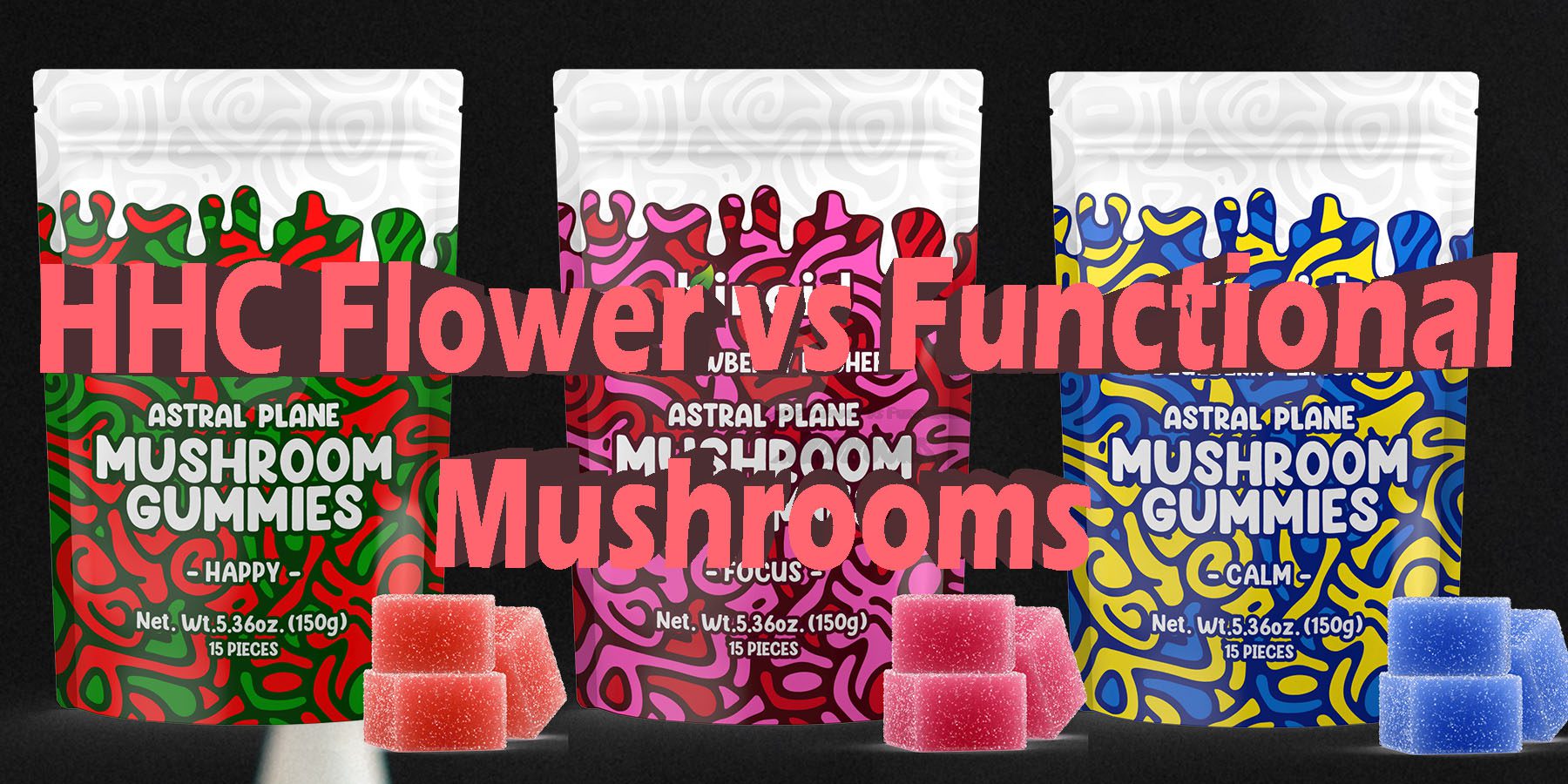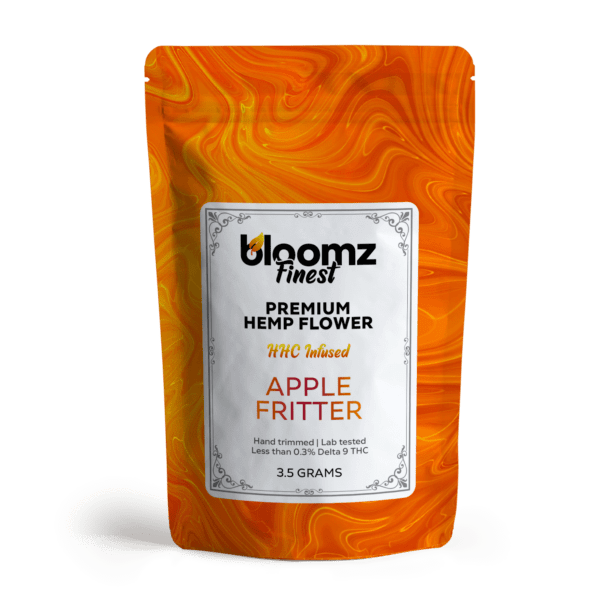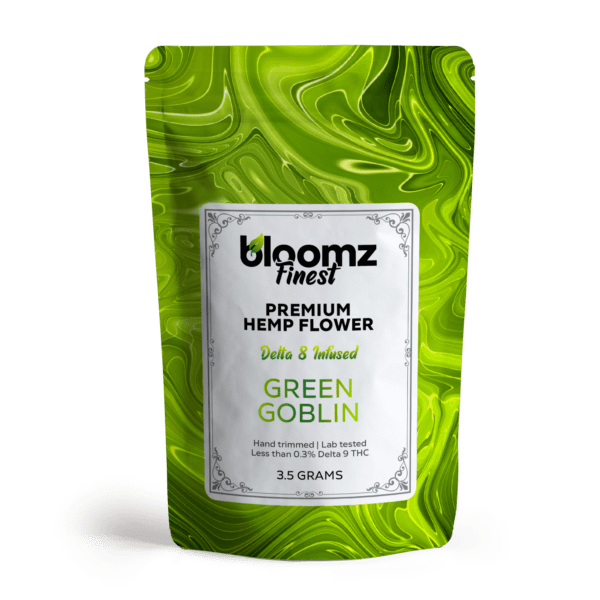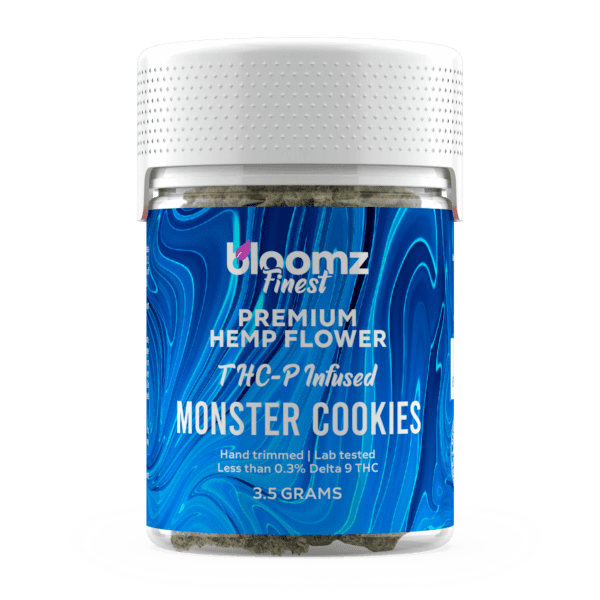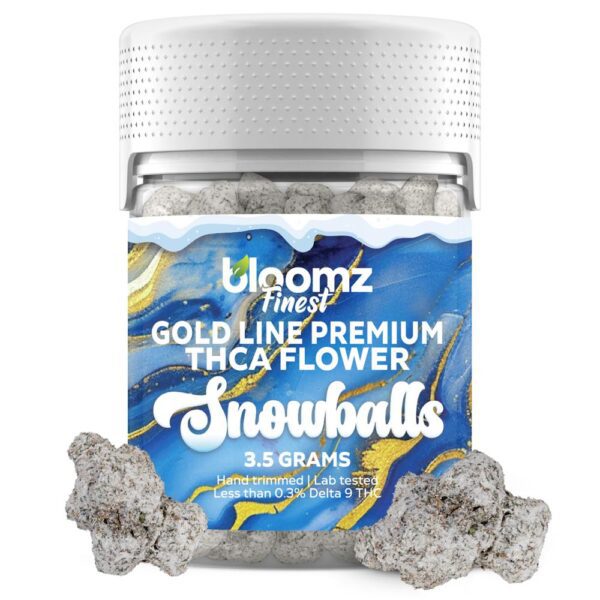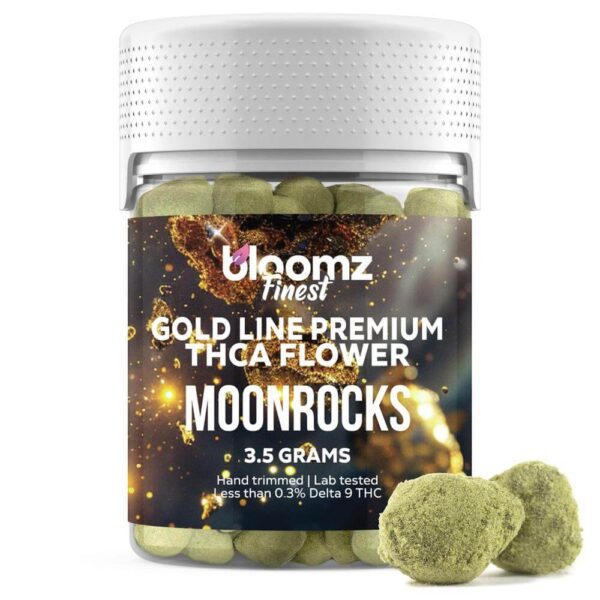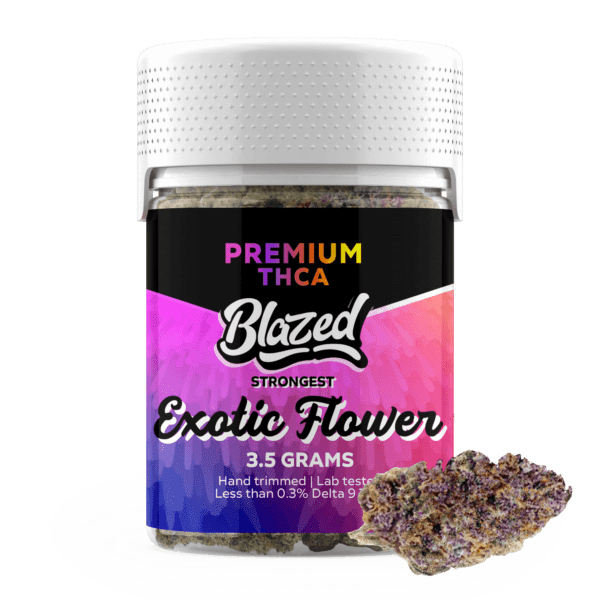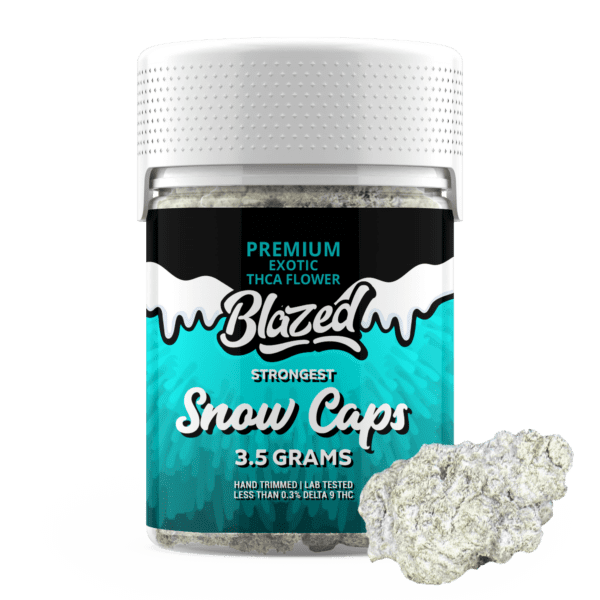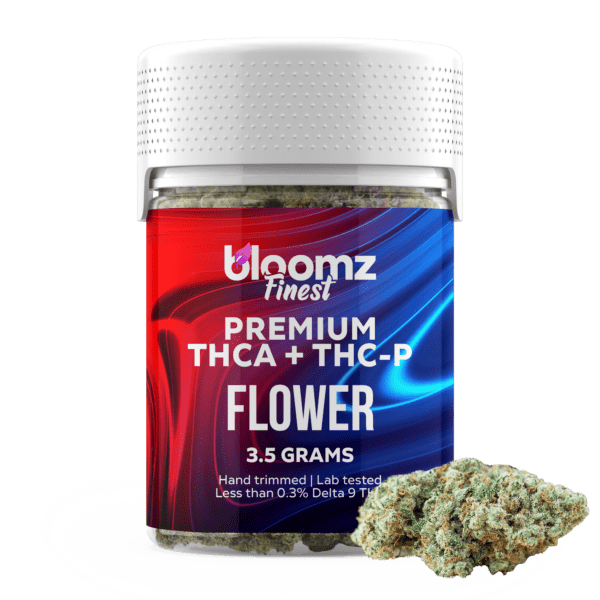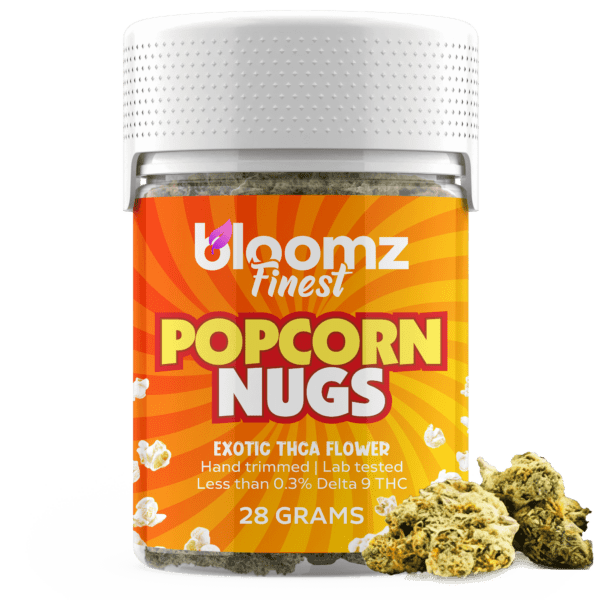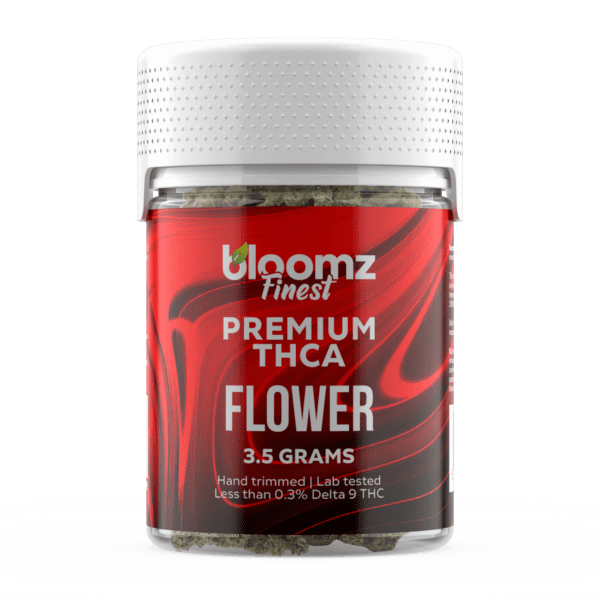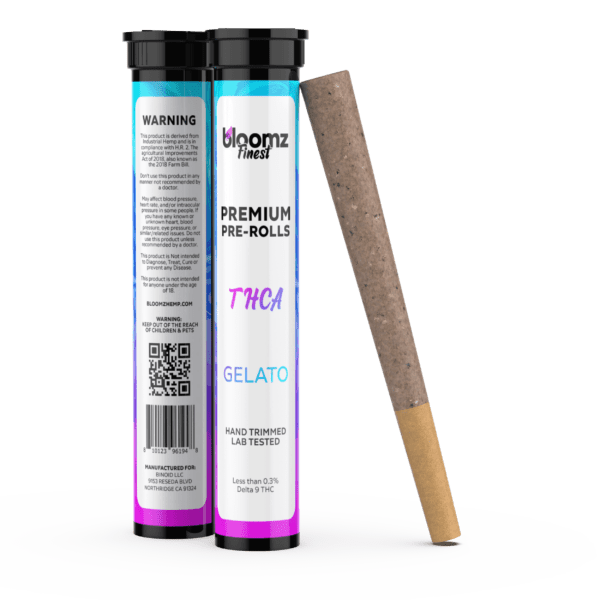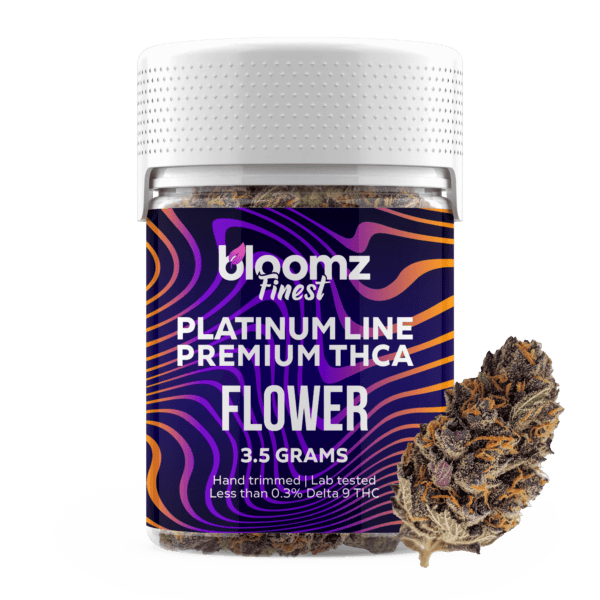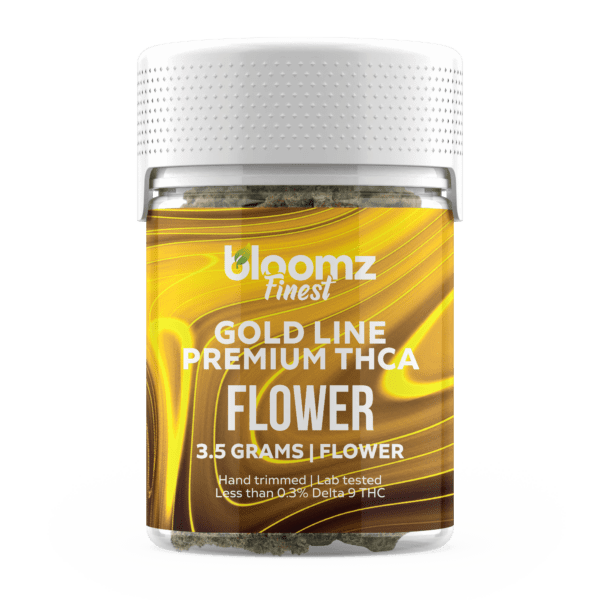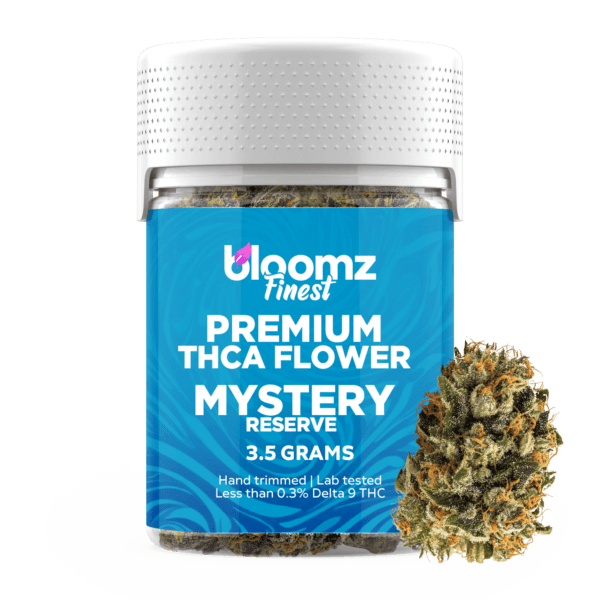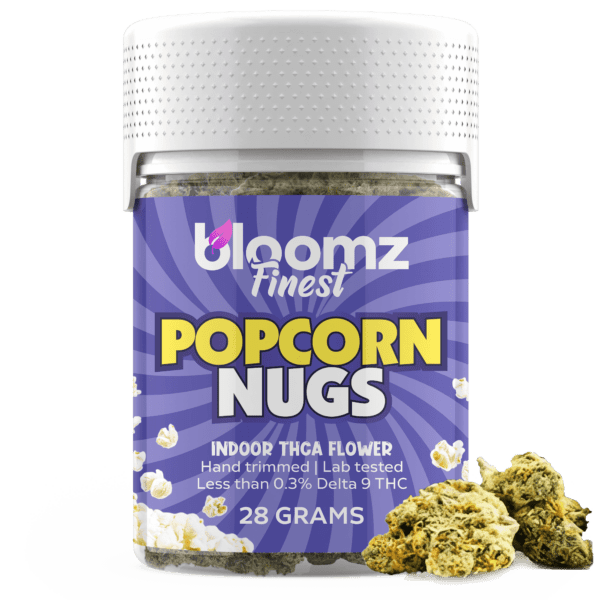In the vibrant and ever-expanding realm of natural wellness and personal enhancement, discerning individuals are presented with a fascinating array of botanical and fungal allies, each offering its own unique pathway to a more enriched experience of daily life.
From the familiar embrace of plant-derived compounds to the ancient wisdom held within mycelial networks, the options for subtly shifting one’s internal landscape are more diverse than ever. On one side of this intriguing spectrum, we encounter HHC flower, a sophisticated product of modern hemp science designed to deliver a potent, clear-headed euphoria and a sense of calm. It represents a refined approach to altering perception for immediate enjoyment.
On the other, we delve into the world of functional mushrooms, a category of fungi celebrated not for their intoxicating properties, but for their centuries-old roles in traditional practices aimed at promoting overall well-being and a centered state. This comparison is not about choosing between “highs,” but rather about understanding the distinct philosophies and mechanisms by which these two compelling options contribute to a more optimized and harmonious existence.
To Buy HHC Flower Click Here
Recommended products
Why It’s Important to Breakdown the Matchup of HHC Flower vs. Functional Mushrooms
In a wellness landscape teeming with natural products, the ability to accurately distinguish between different categories and their intended effects is absolutely paramount for consumers. The matchup between HHC flower and functional mushrooms, while seemingly disparate, represents a critical comparison because these two product types operate on entirely different principles, aim for distinct outcomes, and interact with the body in fundamentally dissimilar ways.
A detailed breakdown is essential not only to prevent confusion but also to guide consumers toward making choices that genuinely align with their personal goals, whether those goals are potent psychoactive euphoria or subtle, holistic enhancement of daily function. Misunderstanding these differences could lead to unmet expectations or, in some cases, inappropriate and potentially dangerous use.
The primary reason this distinction is so important lies in the core nature of their effects. HHC flower is fundamentally a psychoactive product, designed to induce a noticeable, potent, and relatively immediate altered state of consciousness characterized by euphoria, relaxation, and a sense of bliss. Its effects are discernible and intended for recreational enjoyment or a specific shift in mental state.
Functional mushrooms, by stark contrast, are non-psychoactive and are traditionally utilized for their adaptogenic, nootropic, or general wellness-promoting properties. Their effects are typically subtle, cumulative, and aimed at supporting the body’s natural processes over time, rather than inducing an immediate shift in perception. To expect an intoxicating effect from a functional mushroom, or subtle long-term support from HHC flower, would be a complete misunderstanding of their respective roles.
Furthermore, the mechanisms by which these substances interact with the human body are entirely separate, highlighting the need for a clear breakdown. HHC engages with the endocannabinoid system, influencing neurotransmitter release and neuronal activity to create its euphoric and relaxing sensations. Functional mushrooms, on the other hand, contain a diverse array of bioactive compounds, such as beta-glucans, triterpenes, and polysaccharides, which interact with various systems including the immune system, the nervous system, and metabolic pathways. Their benefits are derived from complex biochemical interactions that do not typically involve directly altering consciousness. Understanding these different pathways allows consumers to appreciate the specific kind of biological support or experience each product is engineered to provide.
Finally, this comparison helps to clarify differing approaches to daily integration. HHC flower is often seen as an occasional-use product for specific moments of relaxation or enjoyment. Functional mushrooms, conversely, are frequently incorporated into daily routines as part of a sustained wellness regimen, with their benefits often manifesting subtly over weeks or months of consistent use. By clearly delineating these distinct intentions and integration strategies, individuals can make more informed choices about which natural ally best fits their lifestyle and their overarching vision for personal well-being. This ensures that the chosen product truly serves its intended purpose, preventing the frustration of misaligned expectations.
Contender #1: HHC Flower
In the ever-expanding galaxy of hemp-derived cannabinoids, HHC flower has secured its place as a bright and dependable star, celebrated by users for its remarkable stability and its strikingly familiar effects. It has become a cornerstone of the alternative cannabis market, offering a unique and compelling option for those who seek the classic sensations of a THC high in a format that is, in many places, more legally accessible. From a distance, a jar of HHC flower is indistinguishable from top-shelf marijuana, showcasing vibrant green and purple hues, a frosty coating of what appears to be trichomes, and the pungent, inviting aromas of its parent strains. This resemblance is intentional, as HHC flower begins its life as premium hemp, but its final, psychoactive character is the result of a sophisticated, multi-step laboratory process. It is a product that beautifully marries the agricultural art of hemp cultivation with the precise science of chemical hydrogenation, creating a reliable and enjoyable journey for the modern cannabinoid enthusiast.
At the core of this popular product is the molecule Hexahydrocannabinol, or HHC. While it has recently exploded in popularity, HHC is not a new discovery, as it was first synthesized in the 1940s by the legendary American chemist Roger Adams, who was a pioneer in cannabis research. HHC is typically created through a process called hydrogenation, which fundamentally alters the chemical structure of a THC molecule.
In simple terms, this process involves adding hydrogen atoms to a THC molecule (often Delta 9 THC derived from a cannabis extract) in the presence of a metal catalyst like palladium or nickel. This chemical reaction breaks one of the THC molecule’s double bonds in its top ring structure, replacing it with hydrogen atoms. The result is a “hydrogenated” cannabinoid that is incredibly stable. This increased stability means HHC is much more resistant to degradation from heat, UV light, and oxygen, giving it a significantly longer shelf life than its THC cousins. It is this unique, durable structure that also gives HHC its distinct and reliable effects.
With this crucial scientific context, it becomes clear that “HHC flower” isn’t a strain of cannabis that a farmer can cultivate to be naturally rich in HHC but instead, it’s a manufactured, composite, and infused product. The process begins with high-quality, legally grown hemp flower, which is naturally rich in CBD (cannabidiol) and contains less than 0.3% Delta 9 THC. This beautiful, terpene-rich flower provides the physical structure, the aromatic compounds that create the flavor and smell, and a host of other minor cannabinoids.
This foundational hemp flower then serves as the base which is meticulously infused or coated with a pure HHC distillate, the potent, honey-like oil created through the hydrogenation process. This infusion process is what elevates the simple, non-intoxicating hemp flower into a potent, psychoactive product, delivering the unique and sought-after effects of HHC in a familiar, smokeable format. The quality and safety of the final product are therefore entirely dependent on two separate but equally important factors: the premium quality of the initial hemp flower and the verified purity of the HHC distillate with which it is infused.
Recommended products
The creation of a high-quality and effective HHC flower is a multi-stage process that requires a perfect marriage of expert agricultural practices and precise, high-level laboratory techniques. Each and every step in this complex chain of production is critically important to producing a final product that is safe, potent, consistent, and enjoyable for the end consumer:
Cultivation of Premium Hemp Flower: The journey begins on the farm, where expert cultivators grow high-grade CBD or CBG hemp. These plants are selected for their desirable characteristics—large, dense buds, a rich profile of aromatic terpenes, and a beautiful visual appearance. After being harvested at peak maturity, the flower is carefully dried and cured to optimize its flavor and preserve its natural compounds.
Synthesis of HHC Distillate: In a specialized laboratory, a cannabinoid-rich extract is sourced, often from legal hemp. This extract undergoes the hydrogenation process. It is placed in a pressurized container with a catalyst and exposed to hydrogen gas, which chemically saturates the cannabinoid molecules to create HHC. The resulting crude oil is then meticulously refined and distilled to create a pure, potent, and clean HHC distillate, which is the active ingredient.
Infusion of Flower: The clear, viscous HHC distillate is then carefully applied to the cured hemp flower. To ensure an even and consistent product, manufacturers may use several techniques. A common method is to lightly heat the distillate to make it less viscous and then spray it evenly over the buds while they are being tumbled. Other, more advanced methods involve a solventless “cryo-infusion” process that helps the distillate bind more thoroughly to the flower’s surface.
Crucial Third-Party Lab Testing: This final step is essential for consumer safety and transparency. A reputable manufacturer will send a sample of the finished, infused HHC flower to an independent laboratory for a full panel of tests. This analysis verifies the potency of HHC and other cannabinoids and, critically, screens for any residual heavy metals (like the catalysts used in hydrogenation) or solvents, ensuring the product is clean, safe, and accurately labeled.
The HHC flower market offers a robust selection of product types and categories, primarily differentiated by the quality of the base hemp flower and the specific application process used. This variety allows consumers to choose an option that best fits their personal preferences for flavor, potency, and convenience. From connoisseur-grade indoor buds to easy-to-use pre-rolls, the market has evolved to cater to a wide range of experienced users seeking the unique and reliable effects of this stable cannabinoid:
Indoor HHC Flower: This is the top-shelf category of HHC flower. The process begins with premium, indoor-grown CBD or CBG hemp, which is prized for its flawless appearance, dense structure, and extremely rich terpene content. When this high-quality flower is infused with HHC distillate, it creates a product that offers the best of both worlds: the potent, balanced high of HHC and the complex, delicious flavors and aromas of a connoisseur-grade cannabis strain.
Outdoor HHC Flower: This more budget-friendly option uses hemp flower that has been cultivated outdoors in natural sunlight. While outdoor buds may be less perfectly manicured and slightly less potent in terpenes than their indoor counterparts, they provide an excellent and effective base for the HHC infusion. This category offers a great value for consumers who are more focused on the effects of the HHC itself than on the aesthetic nuances of the flower.
HHC Small Buds: Often called “popcorn” buds, HHC smalls are smaller nuggets of the same high-quality indoor or outdoor flower. They are separated from the larger, premium colas during the trimming and sorting process and are sold at a lower price point due to their size. HHC smalls are a fantastic option for those looking to enjoy the full experience of HHC flower in a more economical fashion.
HHC Moonrocks: For those seeking a truly powerful and concentrated experience, HHC Moonrocks are the ultimate choice. They are created by taking a high-quality hemp nug, dipping it in a sticky layer of potent HHC distillate, and then rolling the entire bud in a generous coating of CBD or CBG kief. This triple-layered product is incredibly potent and delivers a slow-burning, long-lasting, and intensely blissful experience.
HHC Pre-Rolls, Blunts & Joints: Offering the pinnacle of convenience, HHC pre-rolls are ready-to-use smokable products. They consist of ground HHC flower carefully packed into rolling papers (joints) or hemp wraps (blunts), often with a crutch or filter included. Pre-rolls eliminate all the work of grinding and rolling, providing a simple, portable, and shareable option for enjoying HHC.
The use of specific strain names in the context of HHC flower is an important concept for consumers to understand. When you purchase an “Indica,” “Sativa,” or “Hybrid” HHC flower, the strain designation refers to the genetic makeup and, more importantly, the terpene profile of the base hemp flower that was used before the HHC distillate was applied. The final experience is a beautiful synergy: the distinct mood and flavor notes of the original hemp strain are layered with the consistent, core psychoactive effects of the HHC. The terpenes act as the “guide,” steering the reliable HHC high in a more relaxing or more energizing direction:
Indica: When an Indica-dominant hemp strain, known for its characteristically calming and soothing terpenes like myrcene or linalool, is infused with HHC, the result is a profoundly relaxing experience. The balanced, euphoric high of the HHC is guided by the Indica terpenes towards a state of deep physical comfort and mental tranquility. This makes Indica HHC Flower an ideal choice for evening use, unwinding from a stressful day, or simply melting into a state of blissful repose.
Sativa: A Sativa-dominant hemp strain, typically rich in uplifting and zesty terpenes like limonene or pinene, provides the foundation for an energizing HHC experience. The smooth, clear-headed buzz from the HHC is complemented and amplified by the stimulating effects of the Sativa profile. This combination is perfect for daytime activities, creative projects, social gatherings, or any situation where a user wants to feel euphoric, uplifted, and engaged.
Hybrid: Hybrid hemp strains, which contain a balanced mix of Indica and Sativa genetics, offer the most versatile HHC flower experience. When infused with HHC, these strains can provide a “best of both worlds” effect: a pleasant cerebral uplift that sparks creativity and conversation, paired with a comfortable body sensation that keeps you relaxed but not sedated. The nuanced effects of a Hybrid HHC flower make it a suitable and adaptable choice for almost any occasion.
The legality of HHC flower in the United States exists in the same complex, gray territory as many other hemp-derived cannabinoids like Delta 8 THC. Its legal basis is rooted in the 2018 Farm Bill, which legalized hemp and its derivatives, provided they contain less than 0.3% Delta 9 THC. Since HHC is not Delta 9 THC and can be produced from legal hemp-derived CBD, the industry operates under the premise that it is a federally permissible hemp product.
However, this stance is not without its challenges. Some legal interpretations argue that because HHC is created through a chemical process (hydrogenation), it could be considered a “synthetically derived” tetrahydrocannabinol, which could put it at odds with the DEA’s rules. In response to this ambiguity, several states have passed their own laws that specifically ban or regulate HHC and other intoxicating cannabinoids. Therefore, while HHC is available in many states, its legal status is not uniform across the country and remains subject to change.
Recommended products
The purposes for using HHC flower are centered on achieving a pleasant, potent, and reliable psychoactive experience that closely mirrors that of traditional Delta 9 THC. The primary consumption methods all involve heating the flower to vaporize the infused HHC distillate and the natural compounds of the base hemp, allowing for rapid absorption through inhalation. The choice of method largely comes down to user preference for the ritual, flavor, and overall experience, with each offering a slightly different nuance:
Vaping (using a portable or desktop vaporizer): Vaping has become a preferred method for many connoisseurs as it heats the HHC flower to a precise temperature below the point of combustion. This releases a clean, smooth vapor that is rich in the flavors of the base hemp flower’s terpenes and the HHC distillate. Vaping is often considered a more efficient and flavorful way to experience the flower’s full profile without the harshness of smoke.
Smoking: This is the most traditional and direct method of consumption. By combusting the HHC flower in a pipe, bong, joint, or blunt, the user inhales the smoke, leading to a very rapid onset of effects, typically within minutes. The ritual of smoking is cherished by many, and it provides a robust and powerful experience that ensures all the active compounds are vaporized instantly.
Cooking/Baking: HHC flower can be used to create homemade edibles. The HHC distillate used to infuse the flower is already psychoactive, so technically, no decarboxylation is needed to activate it. However, the base CBD or CBG hemp flower does require decarboxylation (heating in an oven at a low temperature) to activate its own cannabinoids. By decarbing the flower before infusing it into butter or oil, users can create edibles that deliver the effects of both the HHC and the full spectrum of cannabinoids from the base hemp, resulting in a potent, long-lasting, full-body experience.
The overall effects of HHC flower are what have made it a standout in the crowded cannabinoid market. It is widely reported by users to be remarkably similar to Delta 9 THC, with a potency that is generally considered to be somewhere between the milder Delta 8 THC and the more powerful Delta 9 THC. The high is often described as well-balanced, providing a delightful mix of cerebral uplift and physical relaxation.
Many users find the HHC experience to be exceptionally smooth and less likely to induce the feelings of anxiousness or paranoia that can sometimes be associated with high doses of Delta 9 THC. The mental state is often characterized as euphoric, happy, and clear, while the body feels a warm, soothing buzz. This combination makes HHC a versatile cannabinoid, capable of providing a chilled-out, relaxing experience or a more giggly, creative, and social one, depending on the strain and setting.
Pros & Cons
HHC flower, with its unique chemical properties and market position, presents a compelling set of advantages alongside some important considerations. Its profile as a manufactured, yet highly effective, cannabinoid product creates a distinct list of pros and cons that potential users should carefully weigh to determine if it aligns with their preferences and priorities.
Pros:
Effects are Very Similar to Delta 9 THC: The most significant pro for many users is that HHC delivers a psychoactive experience that is remarkably close to the classic, sought-after high of traditional cannabis. It provides a familiar and satisfying journey of euphoria and relaxation.
Enhanced Chemical Stability: The hydrogenation process makes the HHC molecule incredibly stable and resistant to degradation from heat, UV light, and oxidation. This gives HHC products a much longer shelf life than THC products, ensuring they retain their potency over time.
A Balanced and Smooth High: Many users report that the HHC high is smoother and more relaxing than that of Delta 9 THC, with a lower likelihood of inducing anxious or paranoid feelings. This makes it a preferred choice for those who are sensitive to the sometimes-edgy side effects of traditional THC.
Legal Accessibility in Many Regions: Thanks to its derivation from legal hemp, HHC flower can be legally purchased in many states where Delta 9 THC is not. This provides a legal pathway for a potent and authentic cannabis-like experience in those areas.
Potent and Satisfying Experience: HHC is notably more potent than Delta 8 THC, offering a robust and substantial high that will satisfy even experienced cannabis users. It provides a significant and enjoyable psychoactive effect that is both potent and well-balanced.
Synergistic Terpene and Cannabinoid Effects: HHC flower combines the unique effects of the HHC molecule with the rich cannabinoid and terpene profile of the base hemp flower. This allows for a nuanced and full-bodied experience where users can enjoy the qualities of their favorite strains.
Wide Variety of Product Choices: The HHC market is well-developed, offering a broad selection of infused flower products. From premium indoor strains to convenient pre-rolls and potent moonrocks, there is an HHC flower product to suit nearly every preference.
Rapid Onset When Inhaled: When smoked or vaped, HHC flower provides a very fast onset of effects, allowing users to quickly gauge their state and dose accordingly. This immediate feedback makes it easy to find the perfect level for the desired experience.
Flavorful and Aromatic: Because HHC flower is made with high-quality, terpene-rich hemp, it can offer an incredibly flavorful and aromatic experience. Users can enjoy the complex notes of pine, citrus, berry, or diesel from their favorite strains.
Potential to Avoid Drug Test Detection (Anecdotal): There is a widely circulated, though scientifically unproven, anecdotal claim that HHC may not be metabolized in the same way as THC and thus might not show up on standard drug panels. However, this is highly unreliable and should not be trusted; users should always assume they will fail a drug test.
Cons:
Contentious and Ambiguous Legal Status: Like other popular hemp-derived cannabinoids, the legality of HHC is a subject of intense debate and varies by state. It exists in a legal gray area that is subject to changing regulations and outright bans in some jurisdictions.
Lack of Regulation and Safety Concerns: The market for HHC is largely unregulated, which can lead to a significant variance in product quality. The hydrogenation process, if not performed and purged correctly by a reputable lab, could potentially leave behind residual heavy metal catalysts, posing a safety risk.
It Is a Manufactured Product: For cannabis purists who value the natural, unaltered state of the plant, the fact that HHC flower is a manufactured product made by coating hemp with a synthesized distillate is a significant drawback.
Limited Long-Term Research: While HHC was discovered decades ago, it has only recently become a popular consumer product. As such, there is a lack of comprehensive, long-term scientific research on its effects and safety profile in humans compared to more well-studied cannabinoids like Delta 9 THC.
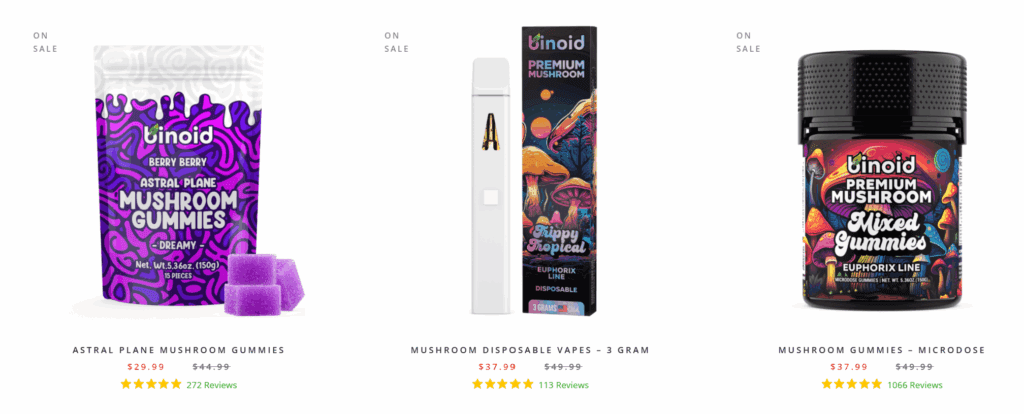
Contender #2: Functional Mushrooms
Stepping into the spotlight from the rich, diverse, and often mysterious world of mycology, functional mushrooms represent a category of fungi valued not for their psychoactive properties, but for their deep well of compounds believed to support overall health and vitality. These are the quiet powerhouses of the fungal kingdom, the great communicators and recyclers of nature, working silently beneath the forest floor to sustain the entire ecosystem. This foundational, supportive role in nature mirrors their celebrated function within the human body. They are distinct from the culinary mushrooms we find in the grocery aisle and worlds apart from their psychedelic cousins, which often command more dramatic headlines.
Functional mushrooms are nature’s tiny biochemical factories, producing a wealth of bioactive compounds that have been revered by traditional wellness practices for centuries as profound allies in the quest for balance and longevity. Their re-emergence into the mainstream wellness conversation is a testament to a growing desire for natural, holistic approaches to well-being, focusing on balance, resilience, and foundational support rather than immediate, perceptible shifts in consciousness. They are the steady, reliable allies in a long-term wellness journey, working subtly in the background to help our bodies perform at their best.
What defines “functional mushrooms” is their rich array of bioactive compounds that interact with the human body in various beneficial ways, without inducing any psychoactive or intoxicating effects. These fungi are packed with complex polysaccharides, particularly beta-glucans, which are renowned for their ability to interact with and support the body’s innate defense systems. Beyond these, functional mushrooms also contain a wealth of other molecules like antioxidant-rich triterpenes, sterols, cordycepin, and unique enzymes, all of which contribute to their holistic effects.
These compounds work together in a complex synergy, but crucially, they are all entirely non-intoxicating and will not produce a “high” or any form of altered perception. Their purpose is primarily adaptogenic and supportive, a concept that describes their believed ability to help the body adapt to various internal and external stressors in a non-specific way, thereby promoting a state of internal balance, or homeostasis. The experience of using functional mushrooms is not one that is felt in minutes or hours with a distinct onset, but rather is integrated into the body’s systems over extended periods of consistent use, much like a long-term conditioning program for your overall vitality.
The history of functional mushrooms stretches back thousands of years, deeply embedded in the traditional medicine systems of East Asia, particularly China and Japan, but also in Siberia, North America, and parts of Europe. Records from the ancient Chinese text Shen Nong’s Divine Farmer’s Materia Medica, dating back over 2,000 years, detail the use of species like Reishi (Lingzhi in Chinese) as “mushrooms of immortality,” placing them in the highest category of “superior herbs” reserved for emperors and royalty due to their rarity and perceived profound influence on vitality and longevity.
In Taoist traditions, Reishi was sought after to nourish the “Shen,” or the spirit. Similarly, Cordyceps has a long history in Traditional Chinese Medicine (TCM) and Tibetan medicine, often used to support stamina and overall vigor at high altitudes. Even in ancient Europe, the Greek physician Hippocrates documented the use of the tinder fungus (Fomes fomentarius) around 450 BCE for its valuable properties. This ancient wisdom, passed down through generations of herbalists and practitioners, forms the bedrock of modern interest, providing a testament to their enduring perceived value long before modern science could begin to analyze their complex chemistry.
The world of functional mushrooms is remarkably diverse, with each species offering a unique profile of bioactive compounds and traditional uses. While many edible mushrooms provide general nutritional benefits, these specific “functional” varieties are distinguished by their higher concentrations of unique compounds that contribute to particular supportive qualities. They represent a fascinating natural pharmacy, each a testament to the intricate biochemical processes occurring within the fungal kingdom, contributing to a holistic approach to daily vitality and allowing for a highly personalized approach to wellness.
Reishi (Ganoderma lucidum): Known as the “Mushroom of Immortality” and revered in TCM as a “spirit calming” herb, Reishi is a striking, woody polypore mushroom with a glossy, varnished cap. Due to its tough texture and intensely bitter taste, it is almost exclusively consumed as an extract or tea. It is most commonly associated with promoting a sense of calm, centeredness, and relaxation, making it a popular choice for evening rituals. Its adaptogenic qualities are prized for helping the body and mind cope with the demands of a hectic lifestyle, supporting a sense of balance and preparing the body for restful sleep cycles.
Lion’s Mane (Hericium erinaceus): This unique mushroom is instantly recognizable, appearing as a large, white, shaggy mass of cascading, icicle-like spines. When cooked, it has a delicate, savory flavor often compared to crab or lobster. Traditionally used by Buddhist monks to aid in focus and concentration during meditation, Lion’s Mane is the quintessential mushroom for supporting cognitive function and mental clarity. It contains unique compounds known as hericenones and erinacines, which are the focus of scientific interest regarding their role in supporting nerve growth factor (NGF), a key protein for brain cell health.
Cordyceps (Cordyceps sinensis and Cordyceps militaris): Famous for its energizing properties, Cordyceps has a fascinating history, though today’s supplements use the sustainably cultivated C. militaris species. Traditionally used to enhance stamina, lung capacity, and endurance, Cordyceps is now a favorite among athletes and active individuals for supporting physical performance and vitality. It is believed to support the body’s natural production of adenosine triphosphate (ATP), the core molecule of cellular energy, providing a smooth, sustained energy boost without the jitters associated with stimulants.
Chaga (Inonotus obliquus): Chaga presents a rugged exterior, growing not as a typical mushroom but as a hard, black, crusty sclerotium on birch trees in cold climates. This dense mass is a powerhouse of antioxidants and contains betulinic acid, a compound it concentrates from the birch tree’s bark. Traditionally harvested and brewed into a tea in Siberia and other northern regions as a general wellness tonic, Chaga is renowned for its role in supporting the body’s natural defense systems and promoting overall resilience, making it a valuable ally during seasonal changes.
Turkey Tail (Trametes versicolor): Named for its fan-like shape and vibrant, concentric stripes of color, this is one of the most common and visually beautiful mushrooms. It is also one of the most extensively researched functional mushrooms in modern science. It is packed with specific, protein-bound polysaccharides known as polysaccharide-K (PSK) and polysaccharide-peptide (PSP), which have been the subject of numerous studies. Due to these compounds, Turkey Tail is almost exclusively associated with providing powerful, foundational support for a robust and healthy immune system.
Shiitake (Lentinula edodes): Perhaps the most famous mushroom on this list from a culinary perspective, Shiitake is a delicious and savory ingredient that holds a revered place in many Asian cuisines for its rich, umami flavor. However, beyond its wonderful taste, it is also a potent functional mushroom with a long history of use in traditional medicine. It contains a powerful polysaccharide called lentinan, as well as eritadenine, and is a rich source of B vitamins, supporting cardiovascular health and a healthy, vigorous immune system.
Maitake (Grifola frondosa): Known affectionately as the “Hen of the Woods” in the West and the “Dancing Mushroom” in Japan (as people would supposedly dance with joy upon finding it), Maitake grows in large, feathery clusters at the base of oak trees. It is prized for its rich, earthy flavor and its robust, meaty texture. Functionally, it is celebrated for containing a unique, complex polysaccharide known as the Maitake D-fraction, and it is most often associated with supporting a healthy metabolic function and promoting a balanced immune response.
The modern wellness industry has made consuming functional mushrooms easier and more convenient than ever before, moving far beyond the traditional method of brewing teas from dried fungi. A vast array of innovative products now exists, allowing individuals to seamlessly integrate the benefits of these mushrooms into their daily routines in a form that suits their lifestyle and taste preferences. This diversity of product types has been a key driver of their recent explosion in popularity, transforming ancient remedies into accessible and often delicious modern supplements and foods.
Powder: This is one of the most versatile forms, typically consisting of a finely ground mushroom extract. It’s crucial to choose an “extracted” powder (using hot water, alcohol, or both) to ensure the bioactive compounds are bioavailable, as the human body cannot easily break down the raw chitin in mushroom cell walls. These powders can be easily added to smoothies, coffee, tea, soups, or even baked goods, allowing for flexible dosing.
Edibles (Gummies and Bars): For ultimate convenience and palatability, functional mushrooms are now widely available in delicious edible forms. Gummies offer a pre-measured, tasty, and chewable dose, completely masking any earthy or bitter flavors and making daily supplementation feel like a pleasant treat. Similarly, nutrition bars and chocolate bars are often infused with mushroom extracts, providing a functional boost to a daily snack.
Tinctures: Tinctures are highly concentrated liquid extracts made by soaking the mushrooms in a solvent like food-grade alcohol or glycerin to pull out the active compounds. A “dual-extraction” tincture uses both hot water and alcohol to capture both water-soluble polysaccharides and alcohol-soluble triterpenes. They are typically taken sublingually (under the tongue) for rapid absorption, offering a potent and precise dosing method.
Capsules: For individuals who prioritize a no-fuss, tasteless, and supremely convenient option, capsules are the perfect solution. They contain a precise, pre-measured dose of powdered mushroom extract, offering a straightforward way to get a consistent daily amount without any preparation or flavor considerations. This is a popular choice for those integrating mushrooms into a daily regimen alongside other vitamins and supplements.
Beverages: The functional beverage market has exploded with mushroom-infused products, with mushroom coffee being the clear frontrunner. These products often blend extracts like Lion’s Mane and Cordyceps with high-quality coffee beans to provide focused, sustained energy without the jitters. Beyond coffee, one can find mushroom teas, nourishing hot cocoa blends with Reishi, and ready-to-drink wellness shots and elixirs.
Dietary Supplements: This is the broad regulatory category under which most functional mushroom products are sold in the United States, governed by the Dietary Supplement Health and Education Act of 1994 (DSHEA). This classification means they are intended to supplement the diet, must feature a “Supplement Facts” panel, and are legally prohibited from making claims to treat or cure any disease, though “structure/function” claims are permitted.
Pre-Workout Products: Capitalizing on the well-documented traditional use of Cordyceps for energy and stamina, many sports nutrition brands now incorporate this and other functional mushrooms into their pre-workout formulas. These products aim to provide a natural, non-stimulant boost to athletic performance and oxygen utilization (VO2 max), often blended with other athletic support ingredients like beta-alanine or creatine, appealing to athletes seeking a holistic and natural edge.
The synergy between the plant and fungal kingdoms is being explored in exciting ways, particularly through the combination of functional mushrooms with various non-psychoactive cannabinoids. This trend is rooted in the idea of creating holistic wellness products that leverage the complementary properties of both. For example, a product designed for evening relaxation might blend the calming-associated properties of Reishi mushroom with the soothing effects of CBD and CBN, aiming to create a powerful synergy for unwinding before sleep.
A blend for daytime focus could combine the cognitive-supporting reputation of Lion’s Mane with the alertness-promoting properties of CBG. Even full-spectrum products in legal markets might include micro-doses of THC to achieve the “entourage effect,” where the various compounds work together to create a more comprehensive effect than any single one could alone. These thoughtful combinations aim to provide targeted support for specific wellness goals, creating sophisticated, multi-faceted formulas for the discerning modern consumer.
One of the most significant and straightforward aspects of functional mushrooms is their legal status in the United States. They are unequivocally legal at the federal level and in all 50 states. This is because they are classified as food items or dietary supplements under the Dietary Supplement Health and Education Act of 1994 (DSHEA) and, crucially, contain no psychoactive or otherwise controlled substances.
You can freely purchase Reishi, Lion’s Mane, Cordyceps, and other functional mushroom products online, in grocery stores, at health food shops, and from major supplement retailers without any legal concern. This clear and unambiguous legality stands in stark contrast to the complex, shifting, and often risky legal landscape of HHC flower. The safety and accessibility that come with this legal status are major factors in their widespread adoption into mainstream wellness culture, providing consumers with peace of mind and the ability to openly incorporate these beneficial fungi into their health regimens.
The overall effects of functional mushrooms are perhaps their most defining and misunderstood feature, especially when juxtaposed with a potent psychoactive substance like HHC flower. The effects are not immediate, perceptible, or intoxicating in any way. You will not feel a “high,” euphoria, or any altered state of consciousness after consuming them. Instead, their effects are subtle, cumulative, and supportive, working gently in the background to help the body’s intricate systems function optimally and maintain balance. The goal is to build resilience and vitality over time through consistent, daily use.
The experience is much like watering a plant; you don’t see the growth happen in the moment you pour the water, but with consistent care, the plant becomes stronger and more vibrant. Similarly, after weeks of consistently taking Cordyceps, an individual might notice more sustained energy during workouts. Someone using Lion’s Mane daily might find their focus gradually sharpening. The “effect” is not a fleeting sensation you get from the mushroom; it’s an enhanced state of well-being you arrive at with the mushroom as a faithful, long-term partner in your health journey.
Pros & Cons
Delving into the world of functional mushrooms reveals a spectrum of compelling advantages and a few considerations that users should be aware of. Their non-psychoactive nature, historical reverence, and broad integration into wellness routines make them a distinct category. Understanding both their strengths and their limitations is crucial for anyone looking to incorporate these powerful fungi into their daily life.
Pros:
Non-Psychoactive Nature: Perhaps their most significant advantage, functional mushrooms do not induce any altered state of consciousness, making them suitable for daily use without impairing mental clarity or driving ability. This allows for consistent integration into any lifestyle, from professional settings to parenting.
Broad Spectrum of Wellness Support: Each functional mushroom offers a unique profile of beneficial compounds that contribute to different aspects of well-being, from supporting immunity and cognitive function to promoting vitality and calm. This diversity allows for targeted support based on individual needs.
Entirely Legal and Widely Accessible: Unlike many other natural compounds, functional mushrooms are fully legal across the United States and most of the world. This means they are readily available in various reputable retail environments, ensuring easy access and promoting transparency in sourcing and manufacturing.
Historical and Traditional Use: Many functional mushrooms boast centuries, and in some cases millennia, of documented use in traditional medicine systems. This deep historical precedent lends credibility and a sense of timeless wisdom to their modern applications, linking users to ancient practices.
Subtle and Cumulative Effects: Their benefits often build over time with consistent use, offering a sustained and foundational approach to wellness rather than a fleeting, intense experience. This makes them ideal for individuals seeking long-term physiological support and a gentle sense of balance.
Versatility in Consumption: The vast array of product types—powders, tinctures, edibles, capsules, and infused beverages—makes functional mushrooms incredibly versatile. This allows consumers to choose the most convenient and enjoyable method for integrating them into their daily routines.
No Risk of Failed Drug Tests: As functional mushrooms do not contain cannabinoids or any scheduled psychoactive compounds, there is absolutely no risk of them causing a positive result on a drug test. This provides peace of mind for individuals subject to workplace or other screening.
Adaptogenic Qualities: Many functional mushrooms are considered adaptogens, meaning they help the body adapt to various stressors and maintain equilibrium. This balancing effect can contribute to an overall feeling of resilience and well-being in the face of daily challenges.
Rich in Bioactive Compounds: These fungi are packed with beta-glucans, triterpenes, antioxidants, and other unique compounds that interact with various bodily systems to support natural functions. This complex biochemical profile is the basis for their wide-ranging beneficial properties.
Potential for Synergistic Blends: Functional mushrooms can be safely and effectively combined with other natural compounds, including various cannabinoids and terpenes, to create synergistic blends. This allows for customized formulations that target specific wellness goals with enhanced efficacy.
Cons:
Lack of Immediate, Perceptible Effects: For those seeking a rapid or dramatic shift in perception or mood, functional mushrooms may be disappointing. Their effects are subtle and build over time, which can lead to a perceived lack of impact for individuals accustomed to more overt sensations.
Inconsistent Product Quality: While the market is growing, product quality can vary significantly. Some products may contain inert mycelium or fillers, or may not use proper extraction methods, leading to a lower concentration of active compounds. Consumers must research brands to ensure they are getting potent, bioavailable extracts.
Earthy Taste: Some individuals find the natural, earthy, or sometimes bitter taste of mushroom powders or tinctures unpalatable. While many products mask this taste effectively, it can be a barrier for those who are sensitive to flavors when consuming raw powders or less refined extracts.
Cost for Consistency: To experience the full, cumulative benefits, functional mushrooms often require consistent, daily use over an extended period. High-quality, potent extracts can be relatively expensive, making a long-term regimen a notable financial investment for some consumers.
How to Go About Choosing Which Option
Navigating the choice between HHC flower and functional mushrooms requires a clear understanding of your personal goals and a frank assessment of the type of experience you seek. This is not a matter of one being inherently “better” than the other, but rather a decision based on intended outcomes: are you looking for a noticeable shift in consciousness for recreation and relaxation, or are you seeking subtle, cumulative support for overall well-being without any intoxicating effects? Your lifestyle, priorities, and desired results will be the ultimate guides in selecting the natural ally that best suits your needs.
First, consider the immediate impact you desire. If you are looking for a discernible, short-term alteration in mood, a potent wave of euphoria, and a sense of relaxation that is distinctly “felt,” then HHC flower is the product designed for that purpose. It offers a clear-headed psychoactive experience that is suitable for winding down, social settings, or a moment of personal bliss. Conversely, if your goal is to enhance your daily equilibrium, support your vitality, or promote mental clarity without any form of intoxication, functional mushrooms are the appropriate choice. Their benefits are subtle and often build over weeks, providing a foundational layer of wellness rather than an immediate sensation.
Next, reflect on your daily routine and long-term commitment. HHC flower is typically an occasional-use product, integrated into specific moments when you desire its psychoactive effects. It’s an acute experience. Functional mushrooms, on the other hand, are often incorporated into a daily wellness regimen, much like vitamins or other supplements. Their benefits are cumulative, meaning consistent daily use is usually required to notice their full potential. If you’re looking for something to simply add to a specific moment of the day for a direct effect, HHC fits. If you’re looking to consistently support your body and mind over weeks and months, functional mushrooms are more aligned.
Finally, consider the legal and experiential risk profile you are comfortable with. HHC, while federally ambiguous, is sold in many places but carries the risk of a positive drug test and varies in regulation. Functional mushrooms are fully legal, non-intoxicating, and safe for daily use without fear of legal repercussions or impairment. Your comfort with legality, intoxication, and the nature of the effects will heavily influence your ultimate decision.
|
Feature |
HHC Flower |
Functional Mushrooms |
|---|---|---|
|
Primary Purpose |
Potent recreation, relaxation, altered perception, euphoria (psychoactive) |
Foundational wellness, long-term support, vitality (non-psychoactive) |
|
Mechanism of Action |
Cannabinoid (CB1/CB2 Receptor Agonist) |
Adaptogenic, nutritive, supports various bodily systems |
|
Desired Outcome |
Recreational enjoyment, relaxation, mood lift, altered perception. |
General wellness, vitality, mental clarity, balance, adaptogenic support. |
|
Onset of Effects |
Rapid (minutes when inhaled), discernible effects. |
Gradual (days/weeks of consistent use), subtle cumulative benefits. |
|
Legality |
Contentious; derived from legal hemp but legality is debated, state bans exist. |
Fully Legal across all 50 states; regulated as dietary supplements. |
|
Risk of Drug Test |
High risk of positive THC drug test. |
No risk of positive drug test. |
|
Primary Use Pattern |
Occasional use for specific experiences. |
Daily, consistent use as part of a wellness regimen. |
|
Perceived Intensity |
Immediate, noticeable, potent intoxication. |
Subtle, non-intoxicating, builds over time. |
|
Target User |
Adults seeking a potent psychoactive experience. |
Adults seeking holistic, non-intoxicating support for daily well-being. |
|
Taste/Form |
Smoked/vaped flower, various infused edibles. |
Powders, capsules, tinctures, edibles, beverages; often masked flavor. |
The Moment and The Foundation
In the rich and diverse landscape of natural supplements and gentle enhancers, the paths offered by HHC Flower and functional mushrooms diverge significantly, each leading to a unique destination. One invites you to savor a delightful, altered moment, a potent and pleasant escape from the mundane, while the other offers a sustained, underlying current of support, gently steering your internal systems towards a more harmonious and resilient state.
The profound beauty in this choice lies not in declaring one superior, but in recognizing and honoring the distinct contributions each can make to a life lived with greater intention. Understanding these fundamental differences empowers you to chart your own course with clarity, selecting the natural ally that truly resonates with the specific rhythm and aspirations of your personal journey.
To Buy HHC Flower Click Here
Recommended products
-
THCA Flower – Platinum Line
$49.99$79.99 -
THCA Flower – Indoor Exotics – Gold Line
$37.99$69.99 -
THCA Flower – Mystery Reserve
$41.99$79.99 -
THCA Smalls
$149.99$256.99

